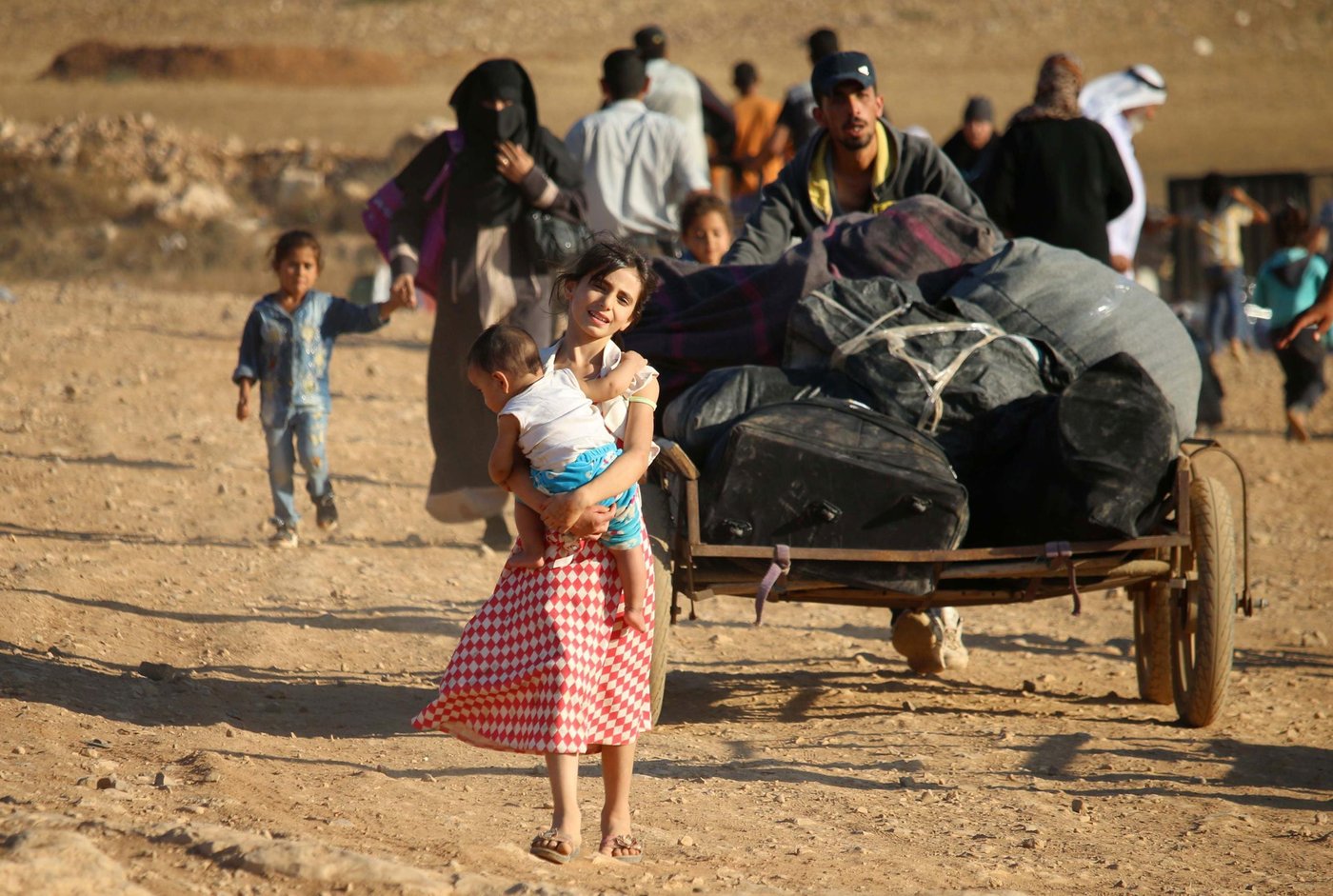On her way home: Photographer Mohamad Abazees met this girl, who we have called «Mona», when her family crossed the border between Jordan and Syria last August. The family are among the 66,000 Syrian refugees who returned to their home country last year.
A recent report by six relief organisations warns that hundreds of thousands of refugees are at risk of being pushed to return to Syria in 2018, despite ongoing violence, bombing and shelling that are endangering the lives of civilians.
Here are 11 threats to children returning to Syria:
#1: Mona is at risk from a neighbourhood in ruins.
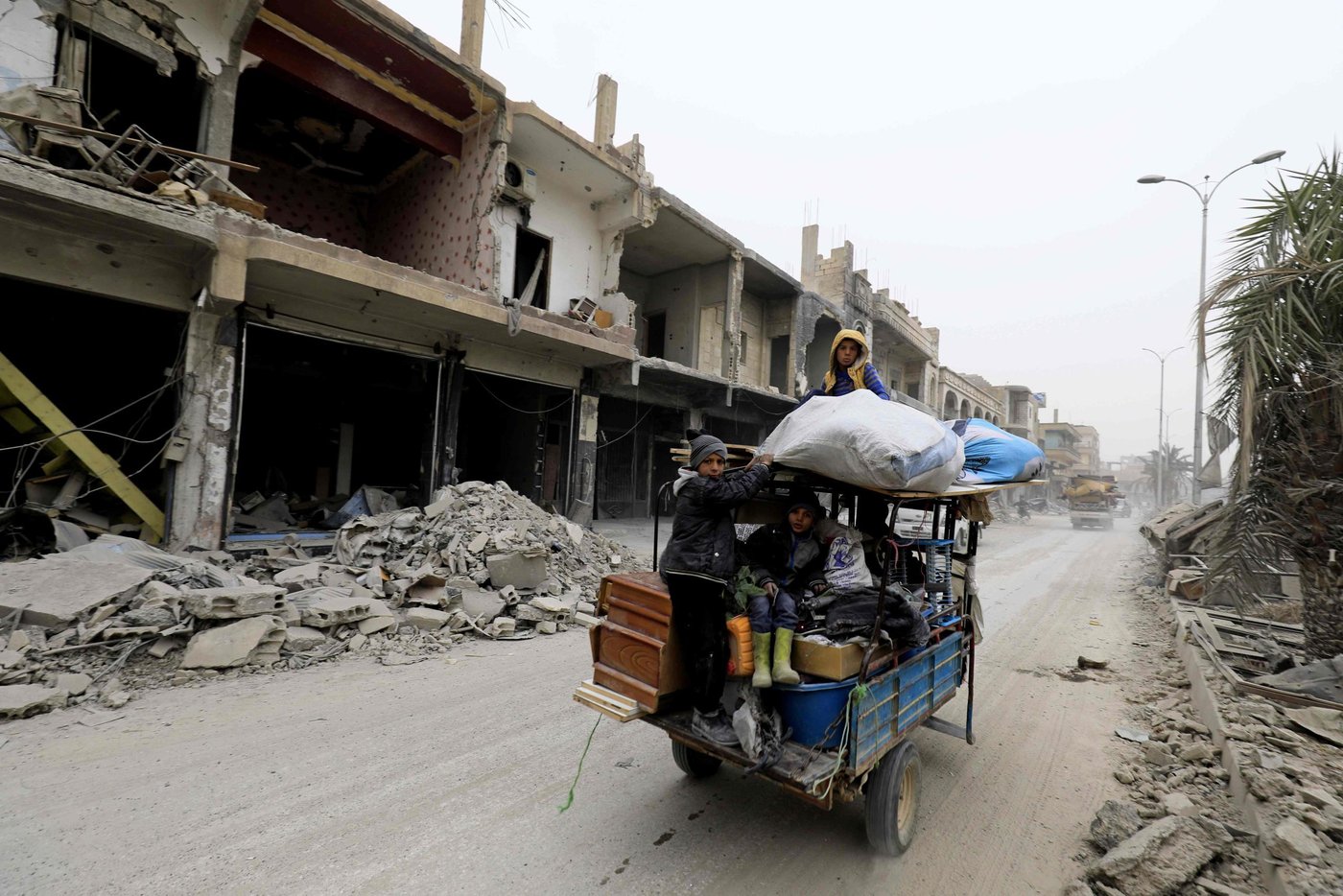
Mona is likely to return to a neighbourhood in ruins, like the children in the picture above, who returned to their homes in Raqqa last December. About one third of all homes and schools, and about half of all health institutions, have been damaged or completely destroyed in the war. More than seven million people live in areas where houses have been bombed. Over 12 million live in areas with limited or no access to electrical power. According to the World Bank, the reconstruction will cost close to USD $180 billion.
# 2: Mona may be forced to live in a tent.
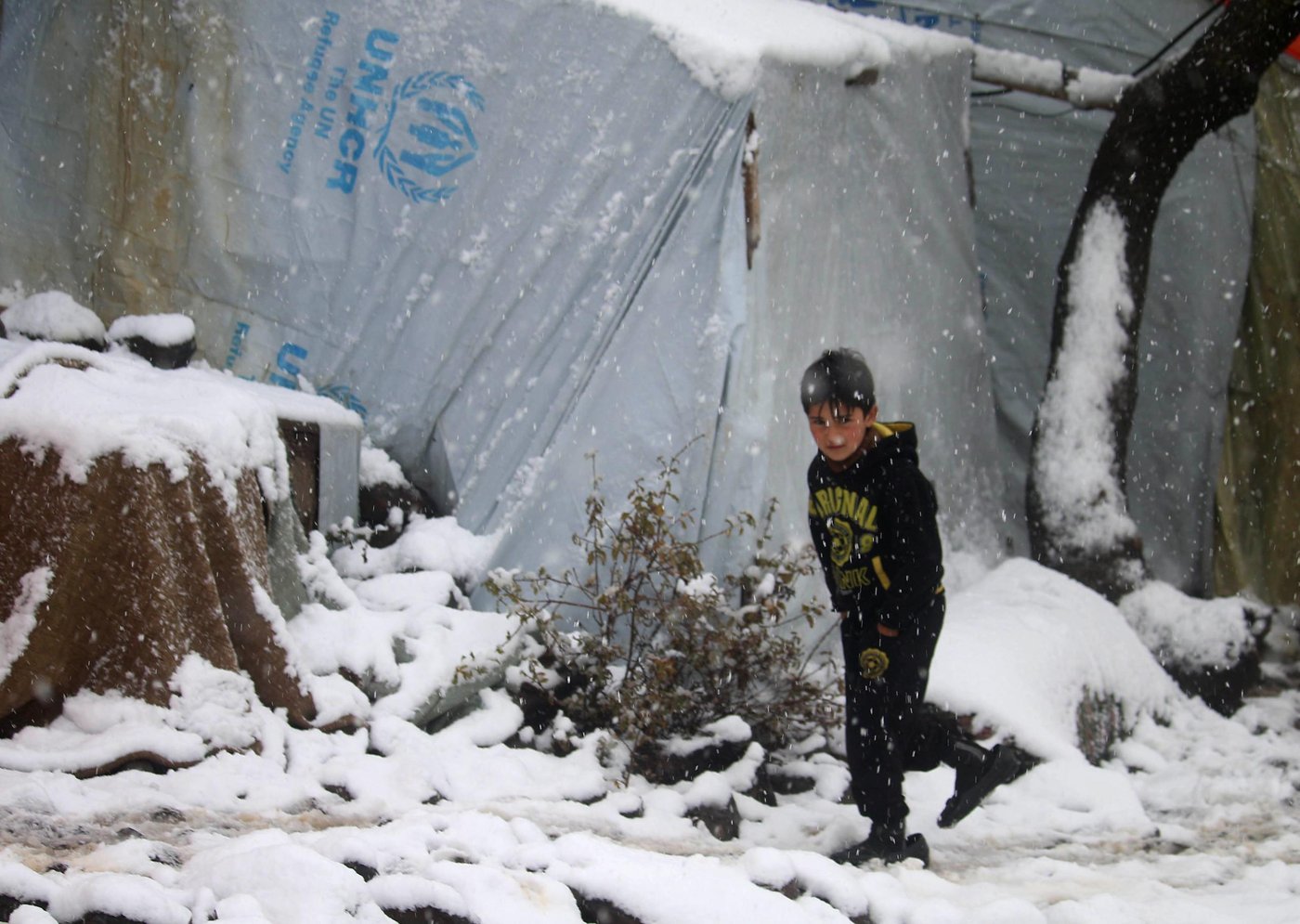
Mona may have to spend the winter in a tent like this boy in a camp for internally displaced people outside the village of Burayqah, in the southeast of Syria. About 750,000 of those who are internally displaced live in tent camps or have sheltered in warehouses, schools and other public buildings.
# 3: Mona is at risk of being forced to flee again.
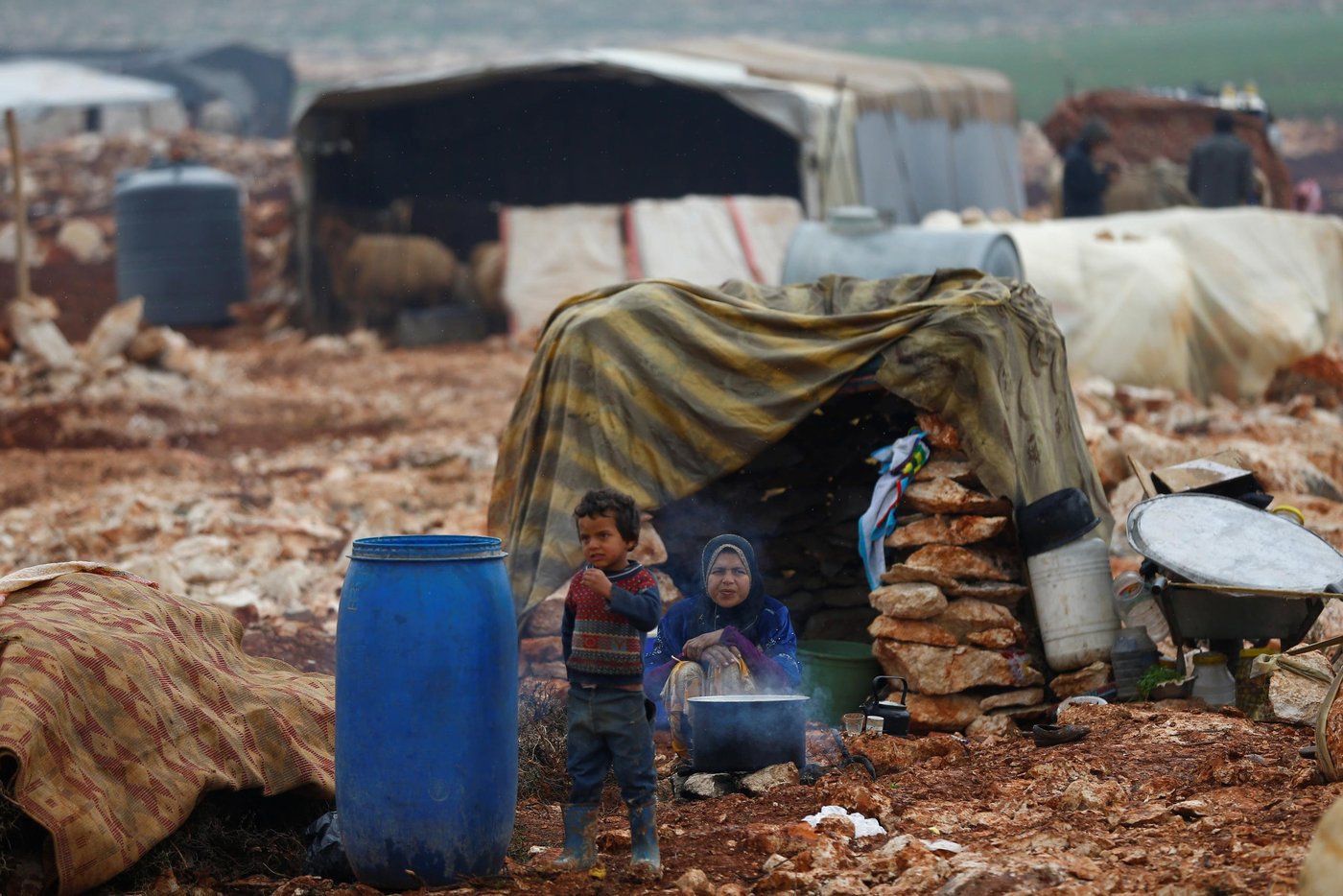
Mona is at risk of being forced to flee again and end up like these children who in January sought refuge in Idlib Province near Turkey's border.
Every minute, two children are forced to flee from armed conflict in Syria. In the first nine months of 2017, 2.4 million people were displaced from their homes – 8,000 people every day. About half of these are children. The UN estimates that 1.5 million people will be displaced in 2018.
# 4: Mona risks dependence on humanitarian aid.
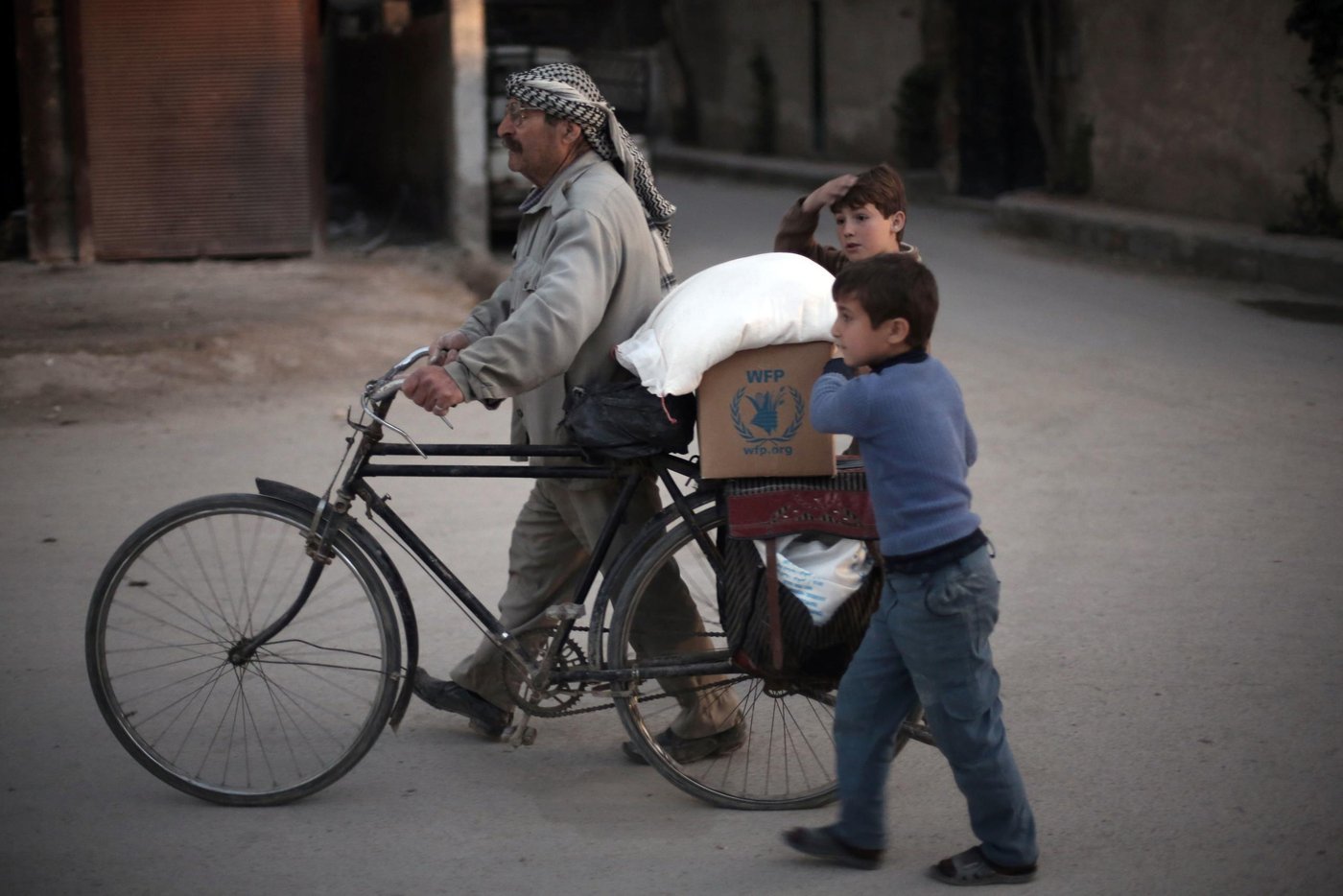
Mona and her family are at risk of being stuck in dependence on humanitarian aid, like this family who's received a food ration in the town of Kafr Batna in the rebel-controlled Ghouta area.
More than 13 million, or 7 out of 10 people in Syria need humanitarian aid. Of these, 5.6 million are in immediate distress. About 40 per cent of those in need of help are children. While the need is high, it is almost impossible to reach the affected areas. More than 1 million children live in areas where relief organisations have limited access, and over 200,000 children live in areas under seige where they receive little or no humanitarian aid.
# 5: Mona risks being denied access to school.
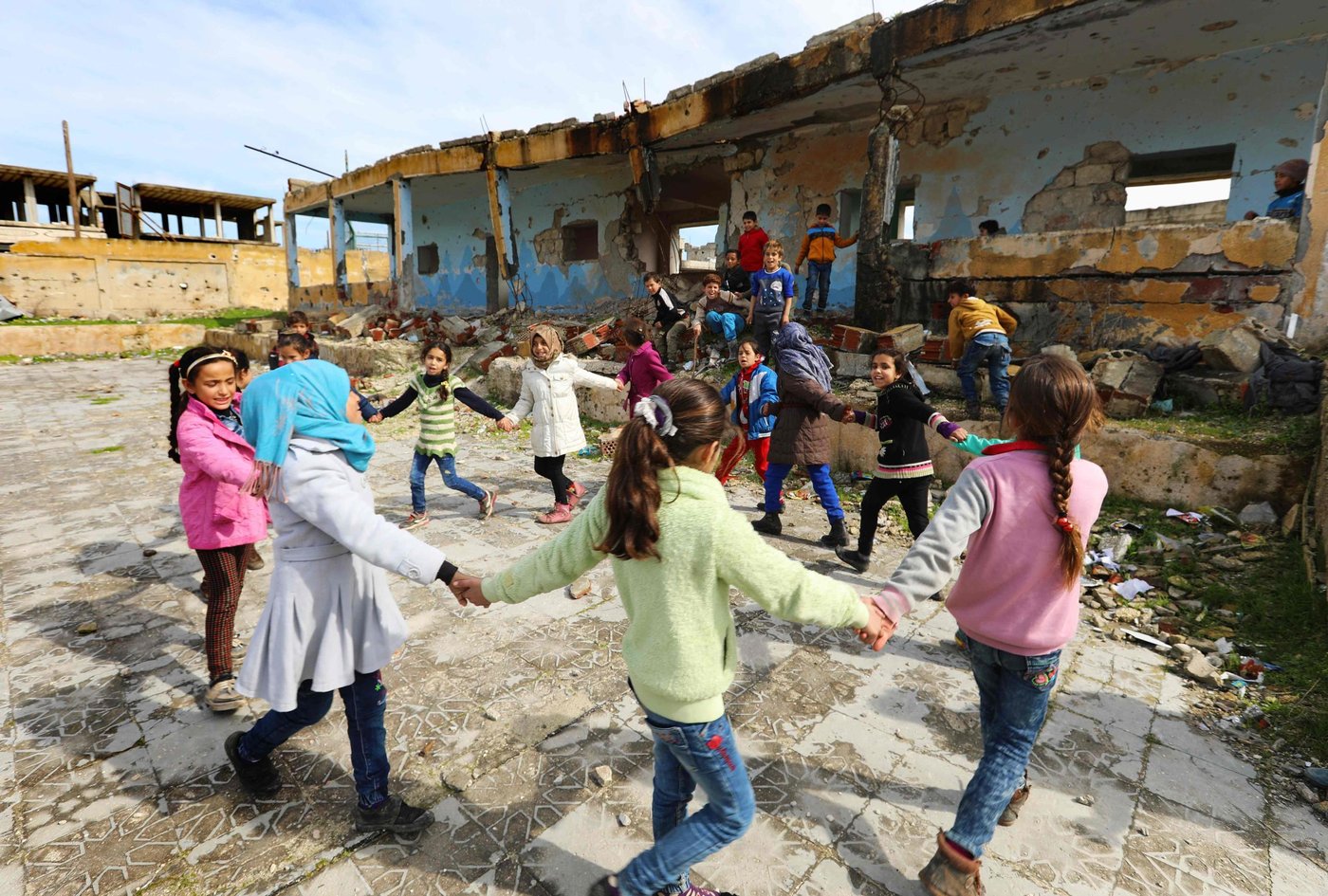
Mona may become among the 1.75 million children between the ages of 5 and 17 who do not have access to formal education in Syria. In the picture above, children play outside of their school in Idlib province that was bombed to the ground.
About 180,000 teachers and school staff have fled, and four out of ten schools have been destroyed by acts of war. Many schools are being used as refugee camps. Currently, every third refugee camp is a former school. If Mona ends up in a camp for internally displaced people, her chance of getting an education is small. A recent survey among children in 171 camps shows that only one in three attend school.
# 6: Mona risks a life in extreme poverty.
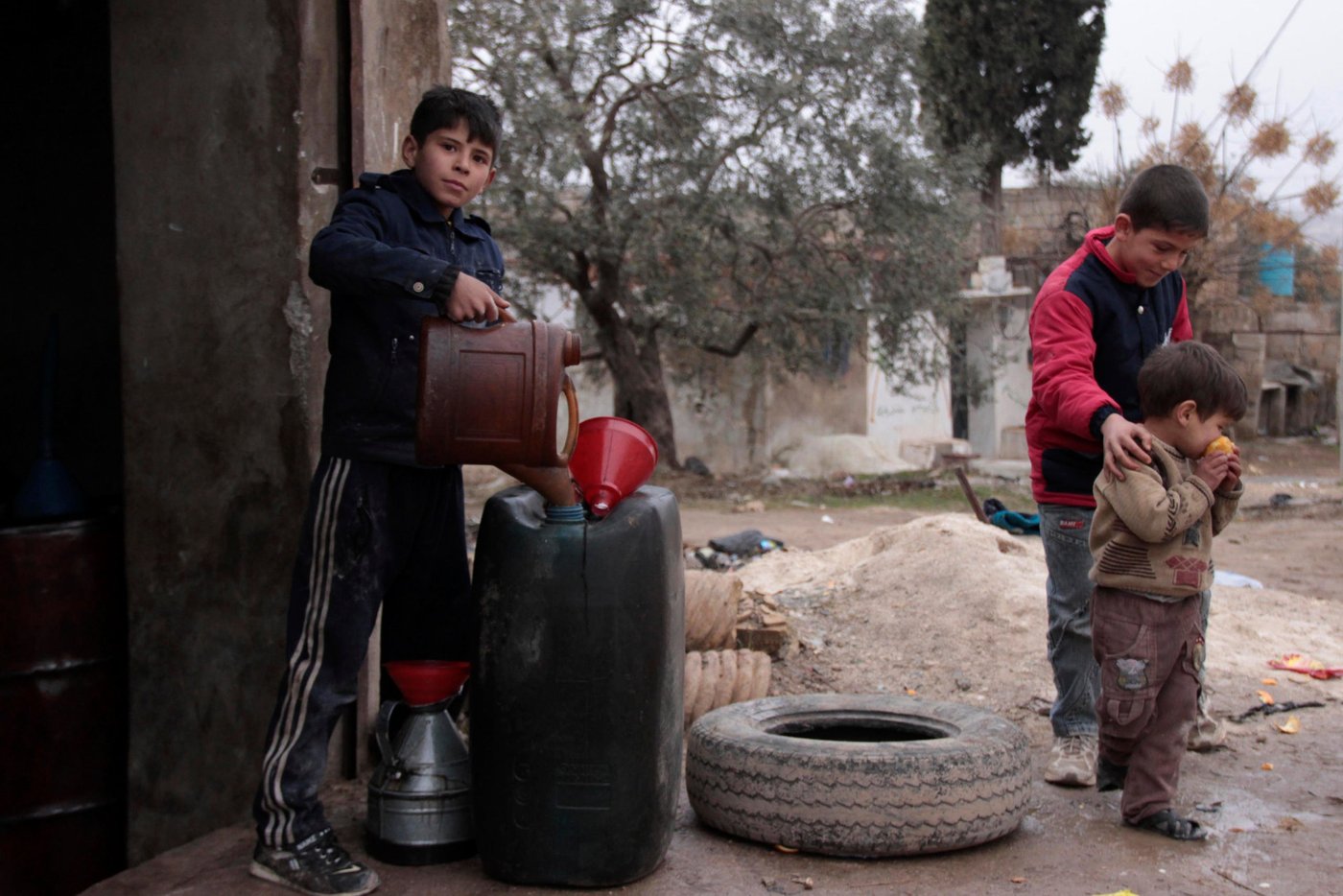
Mona risks living a life of extreme poverty. Poverty forces children to work to earn an income to provide for their family. In the picture above, we see young boys selling petrol in the village of Haas near Idlib.
Nearly seven out of ten Syrians live in extreme poverty and half of the workforce is unemployed. Over one million Syrians cannot afford to pay rent.
# 7: Mona is in danger of starvation.
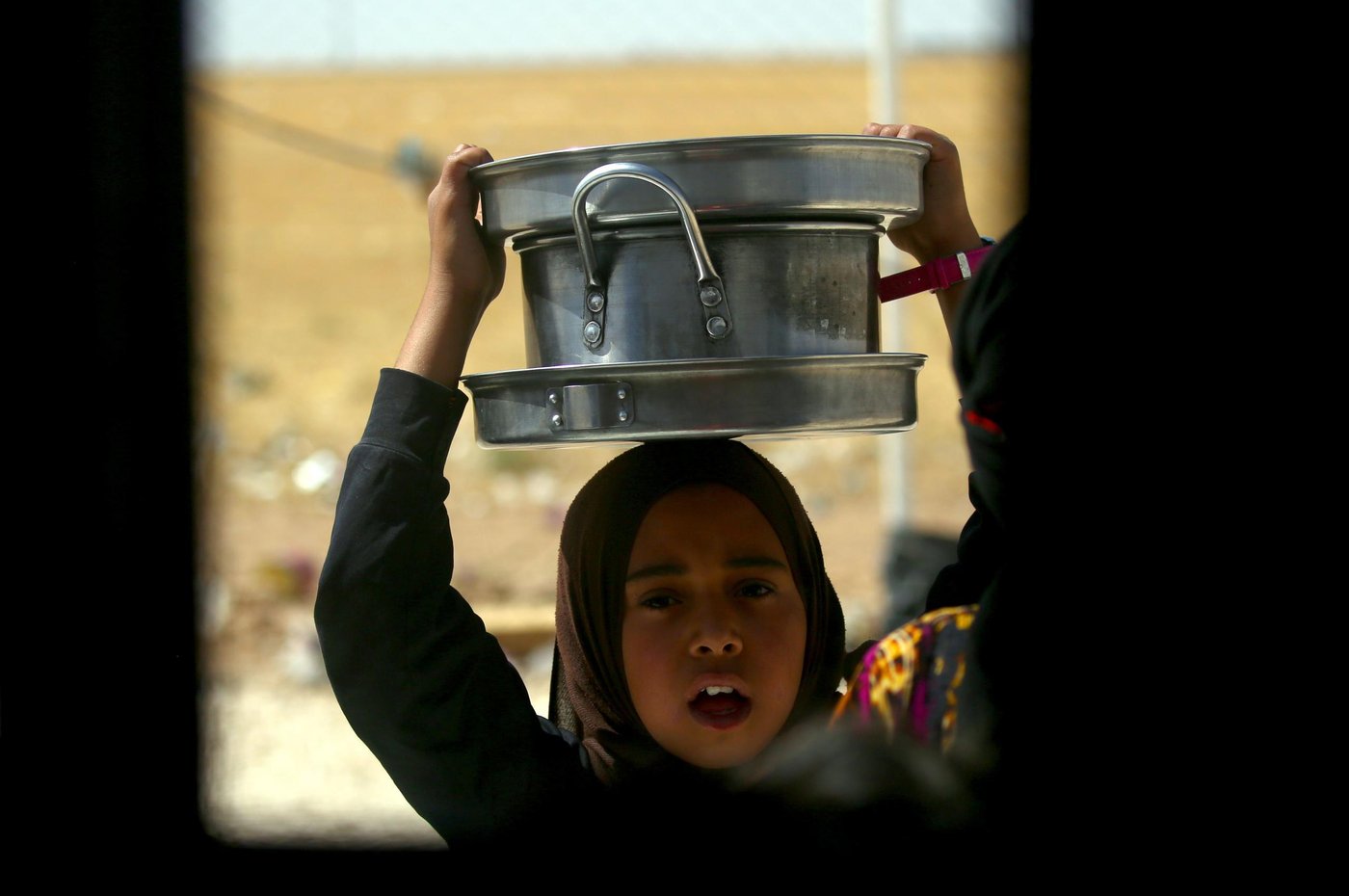
Mona and her family risk becoming dependent on food aid for basic survival, like this Syrian girl waiting to receive food in a camp for internally displaced people near the Turkish border.
Around 6.5 million Syrians do not have enough food to eat and 9 out of 10 families now spend more than half of their income on food. Half of all families have had to reduce the number of meals and many adults only eat one meal a day so that the children can eat more.
# 8: Mona risks not having enough water.
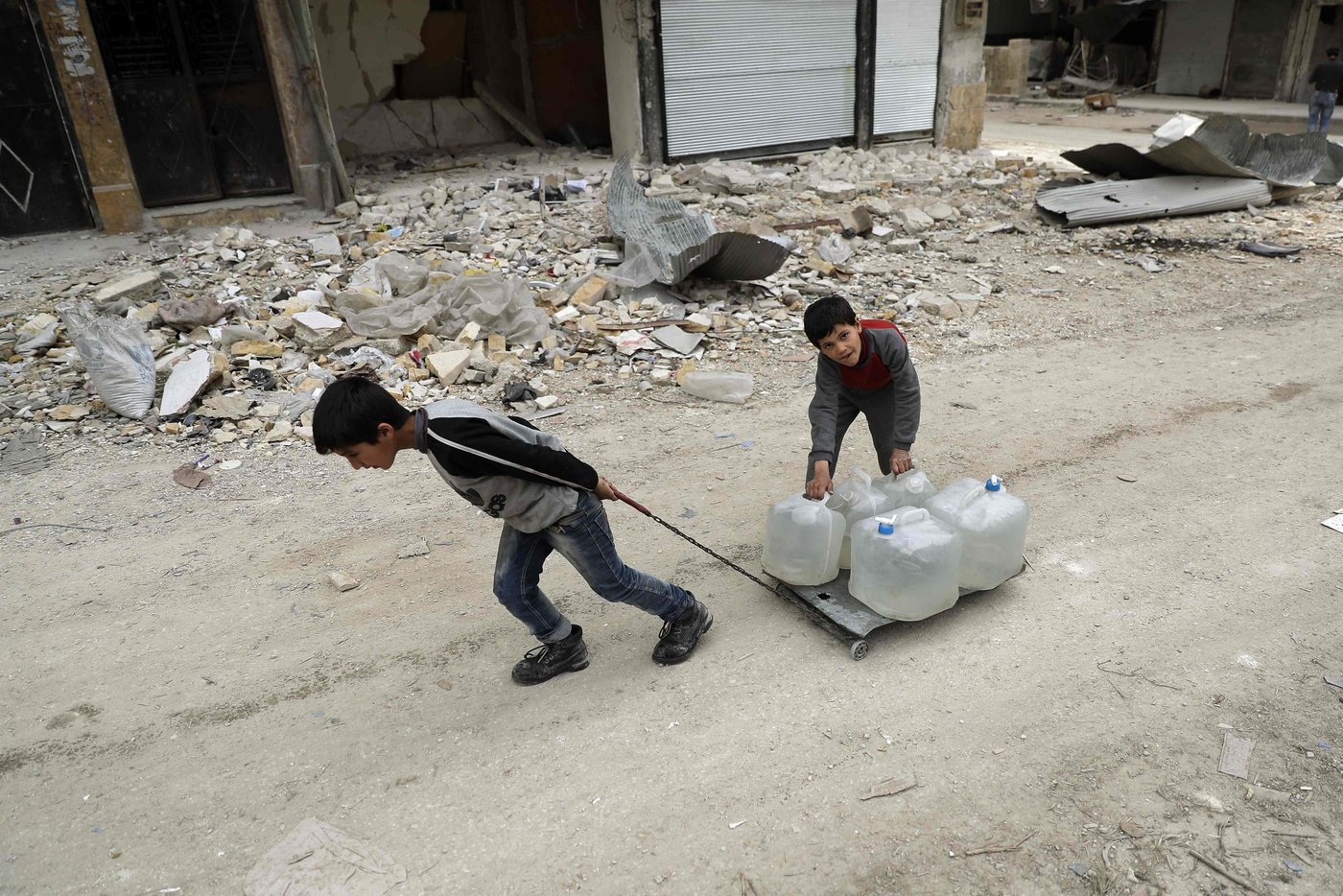
Mona and her family risk having to spend a large amount of time accessing clean water. In the picture above, two boys from Aleppo are carrying home water jars. More than 10 million people live in areas where the basic infrastructure is destroyed, and both water and sewage services are shut. Many families are forced to spend up to 20 per cent of their income on water.
# 9: Mona is at risk of being forced into marriage.
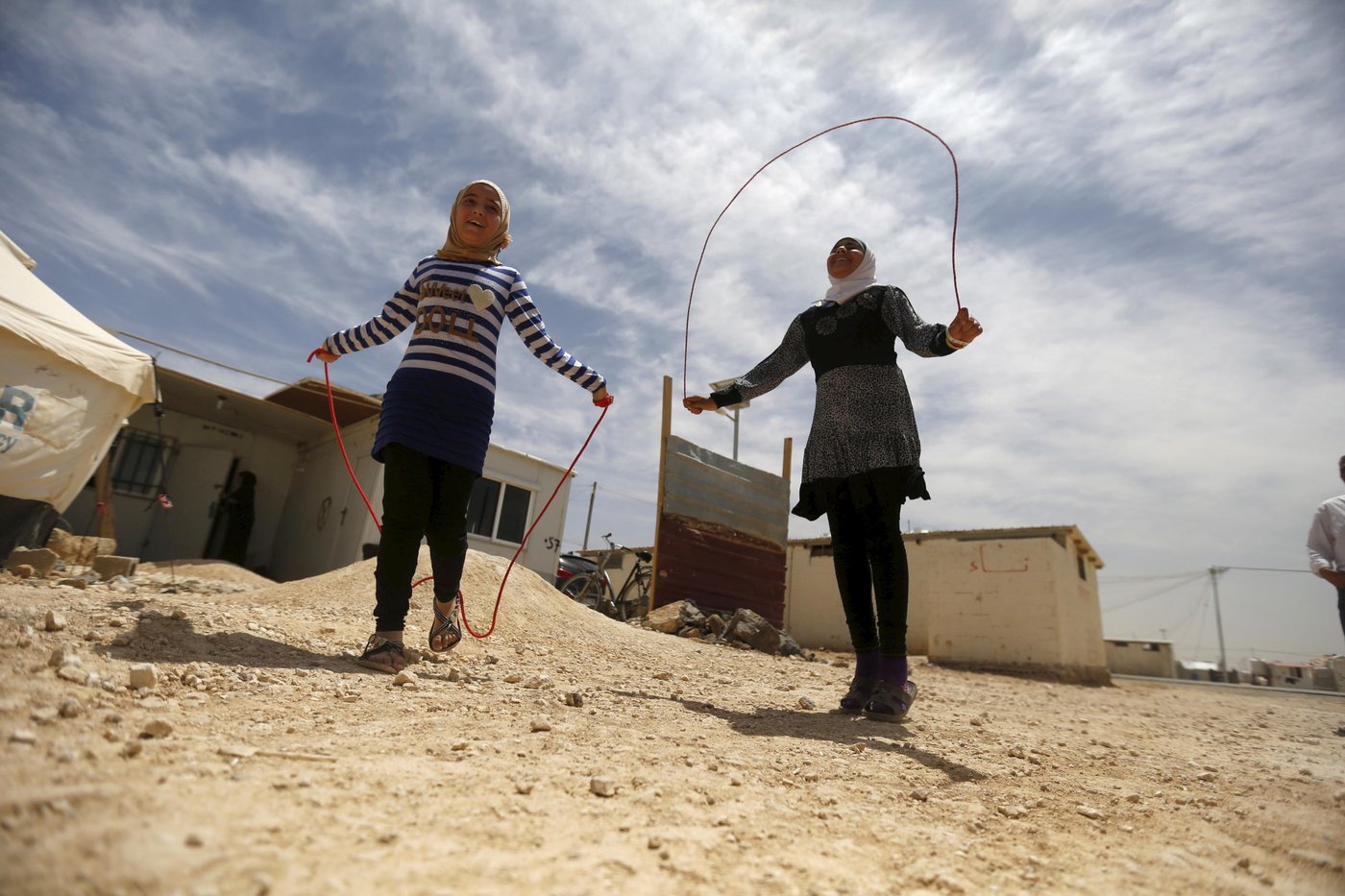
Mona risks being forced into marriage before she turns 14, like Omayma's friend in the picture above (right). Omayma, a Syrian refugee who lives in a refugee camp in Jordan, has now started her own campaign against child marriage.
It has become common for parents to marry off their young daughters so that they can get better protection and ease the family's financial situation. Many girls are married at only 10 and 11 years old. As wives and housewives, the young girls must support their new family. Many are also exposed to domestic violence. In some areas, girls are forced to wear veils and have their freedom of movement restricted.
# 10: Mona and her family are in danger of being killed or seriously injured.
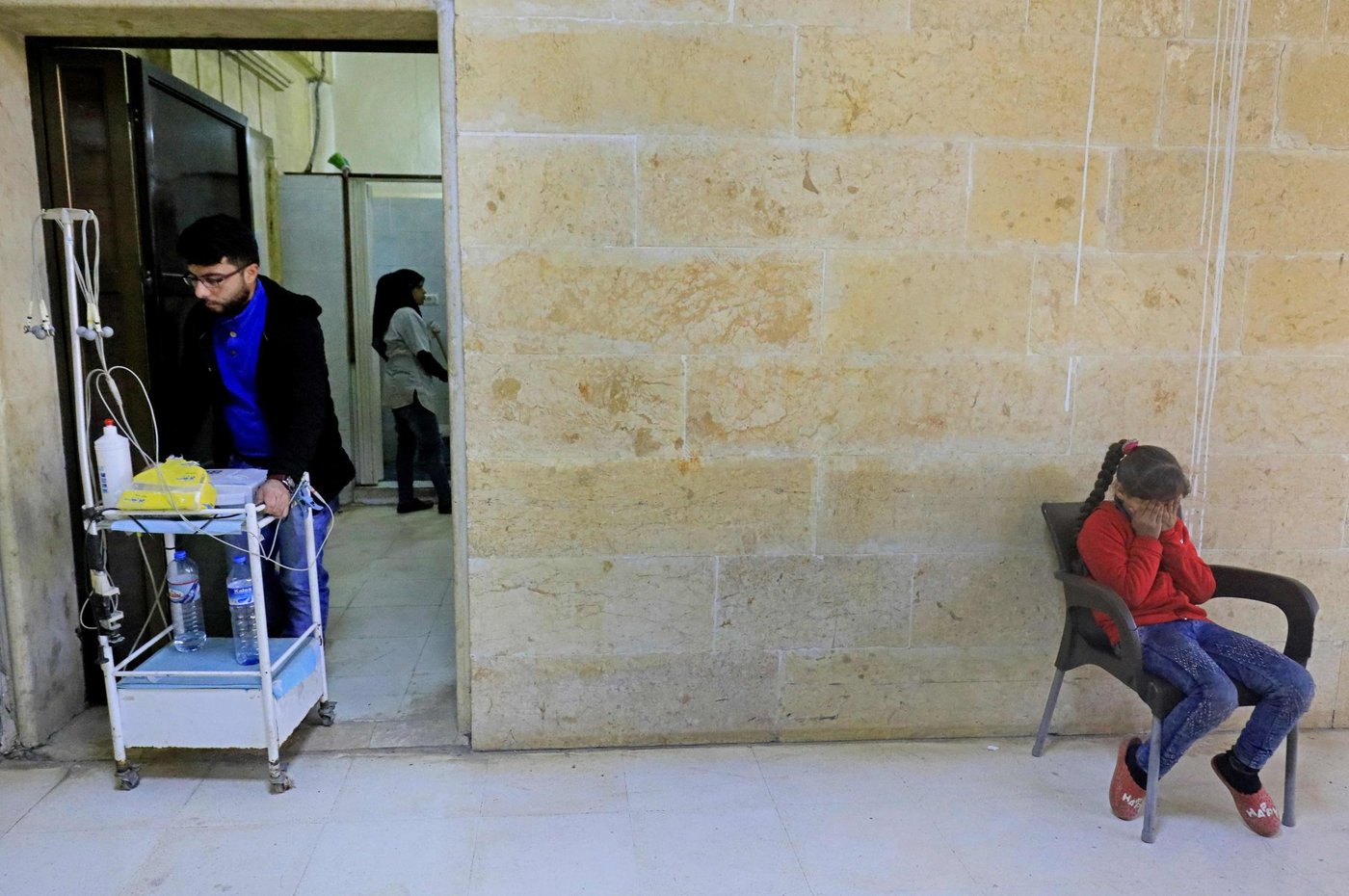
Mona and her family members are at risk of being killed in acts of war or by mines and explosives. In the picture above, a girl is crying at the hospital in the town of Afrin, while several of her relatives are treated for injuries after an airstrike in January.
Around 400,000 people have been killed as a result of the war. Two out of three children in Syria have lost their parents, their relatives or their home. One third of people killed by mines and explosives are children. Many children struggle with serious trauma as a result of the war.
# 11: Mona may fall ill or die from lack of medical treatment.

Mona may become ill or die from illness or lack of medical treatment. Lack of vaccination has causes diseases such as measles, polio, diphtheria, pertussis and tetanus to flourish. About 1 in 10 children are currently not receiving vaccinations against these diseases. The girl in the picture is being vaccinated against polio in the city of Taqd outside Aleppo.
Several hospitals have been directly affected by armed attacks and there is a lack of doctors, medical equipment and medicines. Only half of the country's hospitals and health centres are fully operational.
Read the report: "Dangerous ground: Syria’s refugees face an uncertain future".


